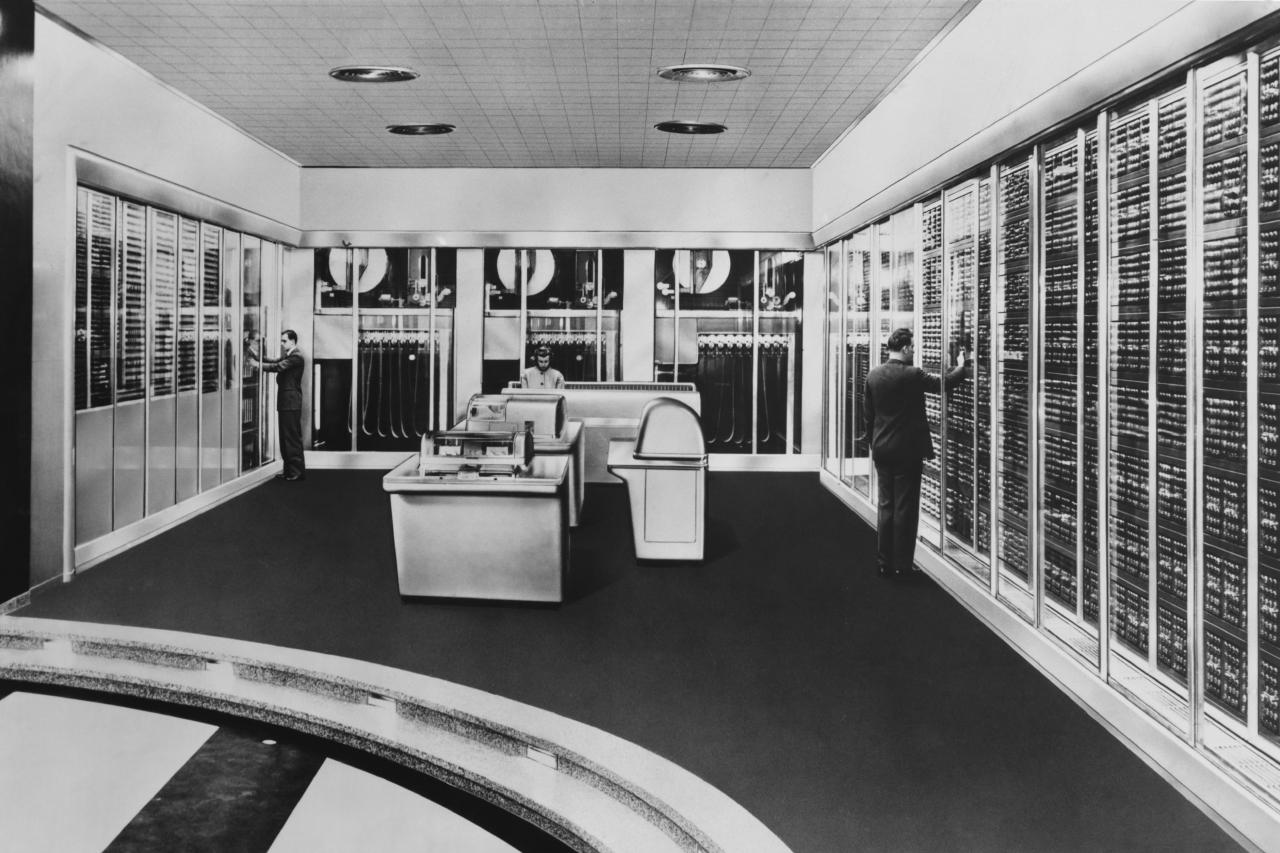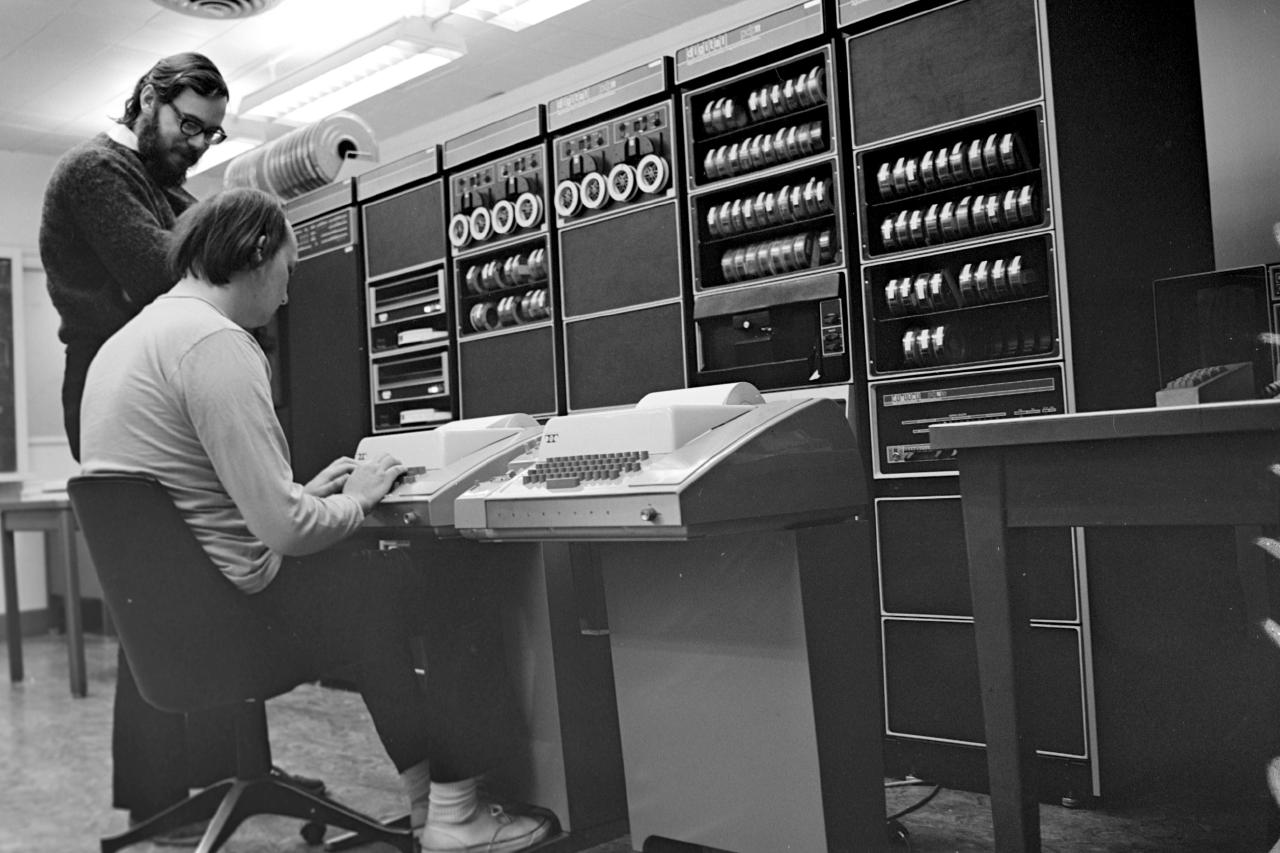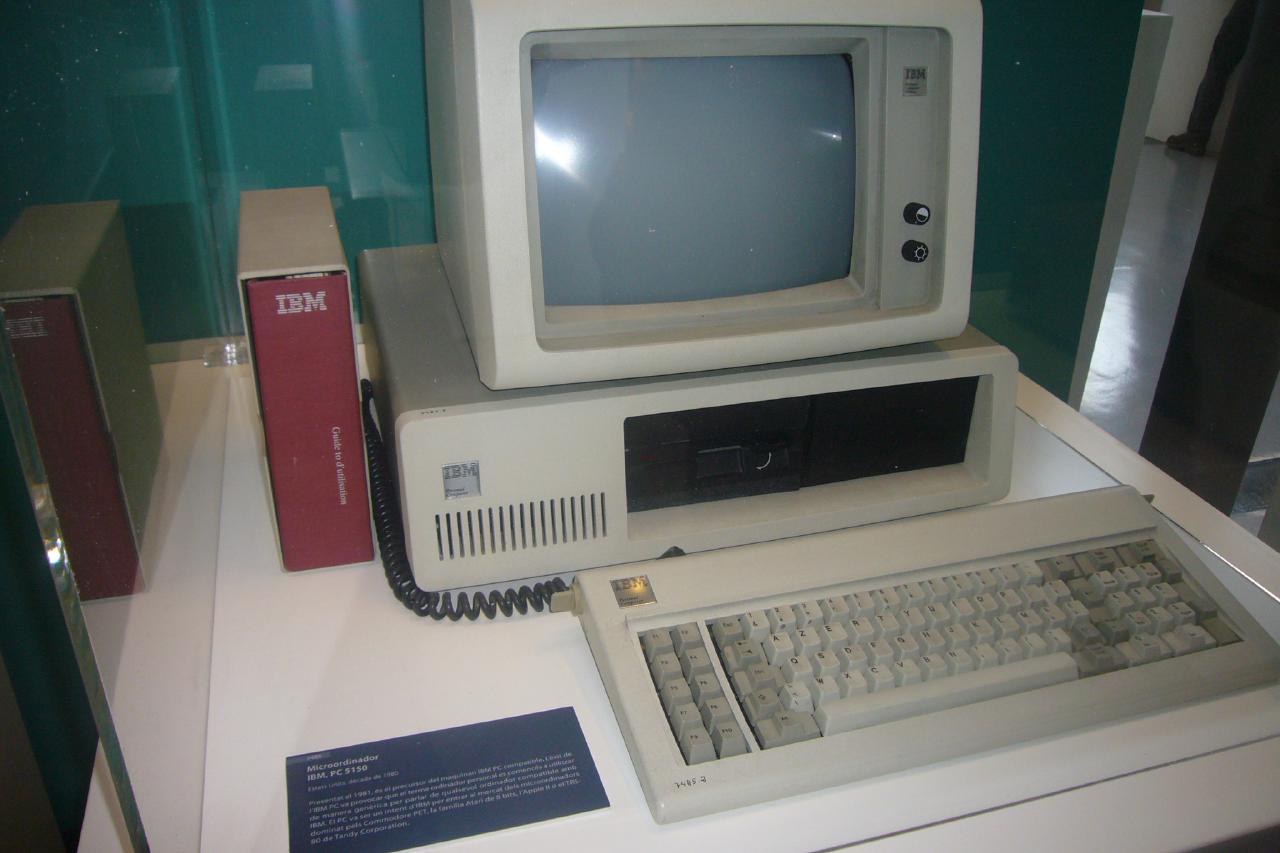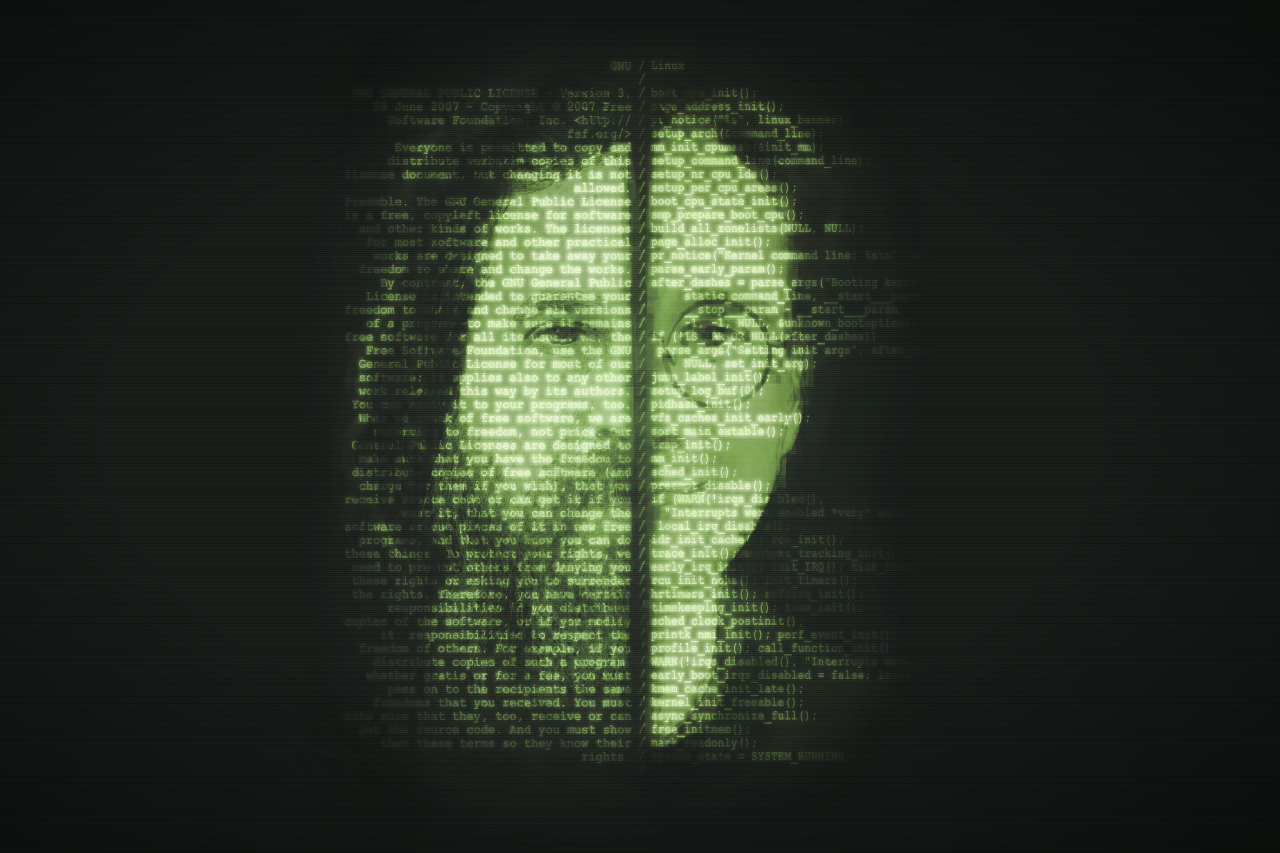The Gist

There are many ways of answering the question of what Linux is, with most of the answers being about as interesting to the average reader as reading the instructions to a can opener.
As we are well aware of that, we’ll try to take a bit of a different approach in this article.
We’ll approach the subject by focusing on rebellion, and corporate intrigue. Things happening in the right places at the right times, and wrong things happening at the right time—for the wrong people.
To answer the question in a literal way we’ll have to dive into a tiny bit of technical stuff, but we’ll be brief. Promise. Ish.
Care to indulge us, and coming along for a bit, dear reader?
But before we do, we ask you to keep in mind that this is an opinion piece. Brought to you through our biased lenses, for your enjoyment. Food for thought, or a giggle around the water-cooler. We respectfully leave all of that in your capable hands, dear reader.
Contents
A Bit of Context
At the heart of an operating system—any operating system—lies the kernel. Aptly named kernel, as it is indeed the heart or central axis around which a computer operating system revolves. It is the central nervous system of a computer’s software environment, and it regulates pretty much anything and everything imaginable. It communicates with all of the hardware, networks, and any software present on a system. Needless to say, creating one of these, and getting it to work properly, is no small feat.
This brings us to the literal definition of Linux, when keeping it brief and not too technical. It’s not an operating system, but rather the core ingredient that can be used to make an operating system. Best of all—it’s free of charge, and users aren’t restricted in making any changes. There are in fact a number of other free and open source kernels available. The BSD family of kernels for example, power a lot of servers out in the wild. The kernels in FruitOS and other Fruit products are partially based on BSD as well.
So, what is an operating system?
Operating systems are based on a collection of carefully integrated components, much like any other type of machine. An OS isn’t a single thing, but rather a system of components designed to work together in order to achieve something bigger—and hopefully better.
Then what does it mean when people say ‘run Linux’..?
Strictly speaking it means running an operating system that uses Linux as its kernel. In this definition most phones out there run Linux as do a large number of TV’s, cars, refrigerators, video recorders, and other devices. There are quite a few systems out there that are based on the Linux kernel. The user interfaces of these devices vary tremendously however, so it’s not considered the same as ‘running Linux’ in the traditional sense.
Although highly impractical—and outrageously time consuming—it would in theory be possible to replace the kernels of other operating systems with the Linux kernel. Most users wouldn’t be able to tell the difference if a different kernel was being used. Everything would look and feel the same where the operating system is concerned. Most applications would however cease to function unless they were updated as well. For most users, kernels are essentially ‘invisible’.
And less strictly speaking…what does it mean when people say ‘run Linux’?
Glad you asked. To answer that we’ll go off on a tangent and stroll down an avenue that allows for some mud slinging. Maybe not entirely necessary, but we think it’ll help. If not for you, then it certainly will for us.
Rise of the X’s
A long, long time ago, in a galaxy right where we are—after people figured out ways of using computers without flipping switches, or punching holes in cards, but probably before lunch—the notion of operating systems was born.

The main reason for this—aside from making it easier to work with computers in general—was to allow computers to run multiple tasks simultaneously, while allowing multiple users to do their jobs simultaneously as well. As computers were rather big and expensive at the time, it made a lot of sense to allow for ’time sharing’. This made it a lot more feasible for companies, government agencies, and universities, to get the most out of their investments.
A lot of attempts were made at getting the whole multi-user and multi-tasking idea to work properly, with some being quite good and others…not so much. When hardware manufacturers introduced ‘minicomputers’ (a computer reduced to the size of a box that could neatly pack a small family and a pet), a new operating system was born: UNIX.
Along with a few other operating systems, UNIX provided a far more affordable way for businesses, governments, and universities, to start using computers to support their activities. Big ’traditional’ computers were certainly useful, impressive, and a nice thing to show off, but they were a lot more expensive. They also required a lot of highly specialised service and expertise.
So UNIX and some of its rivals paved the way to popularising ‘minicomputers’—and were quite successful in doing just that. UNIX was designed to be relatively ‘portable’, meaning it could be made to run on different machines relatively easily. Thus it emerged as the most popular family of operating systems.

‘Family’ of operating systems?
Yes indeed, because UNIX has spawned more mutant offspring than any operating system before it, or since.
It was created at the research lab of ‘Ye Olde Phone Company’, who was being investigated by Uncle Sam for antitrust law violations at the time. So rather than exercising maximum control over it—which likely would have proved Uncle Sam’s point—it took a more relaxed approach to the release of UNIX.
So ‘Ye Olde Phone Company’ instead licensed the software to whomever was interested, and bundled the source code along with the licence.
Some of these licensees started to create extensions to UNIX, as well as rewriting parts of it. Some of these extensions were so incredibly useful they made their way back to the mainline version of UNIX. Others were instead used to create new ‘flavours’ or specialised versions of UNIX instead.
Despite all that diversification (and likely before all that became a real problem), UNIX became so popular that every major IT company was getting in on it. Big Blue, traditionally a ‘computer’ (as opposed to a ‘minicomputer’) company, developed their own flavour as well.
Even a small company in Albuquerque, New Mexico that would later grow out to ruin, er, rule much of the computer market, joined in on the fun. This didn’t last long however, as they realised that they couldn’t make the amount of money they wanted by selling a licensed product. They’d rather make money with a product they could fully control, no matter how much more limited and inferior.
Amidst all this creativity however, it was becoming clear that UNIX customers were beginning to show a preference for an open and non-commercial version, created by a licensee (a university). Loyalty to the mainline version made by ‘Ye Olde Phone Company’ was a diluted affair at best.
By the time the phone company wanted to take full control, or rather was able to do so safely without legal risk, it was too late. There were too many versions of UNIX out there, and it had become very difficult to determine where the original work, the extensions, and the changes—started, ended, and blended. It had become a legal nightmare, although not of the antitrust variety.
So started the UNIX wars. A war that tragically delayed progress and locked up the world of professional computing, opening the door for small amateur companies to step in, divide, conquer, and pressure the world into a different direction.
The beginnings of computing were mostly focused on simply getting things to work. Licensing, copyright and trademarks being less of a point of focus, for most parties concerned. This was no longer the case however, with companies becoming more and more focused on restrictions, rights, and ownership.
This didn’t sit too well with a number of engineers however, so they started to look into ways of creating something that walked like UNIX, talked like UNIX—while legally being something else: the UNIX-like operating system.
More on that later, as we have to talk a bit about those small amateur companies who stepped in and changed everything first.
Attack of the Itty-Bitty-Clones
Meanwhile, far away from all that, a number of companies popped up to take advantage of yet another advancement in computer design and manufacturing. It had become possible to reduce the size of a computer to that of a box that could be carried around by an average office worker. Even the ones that had never run more than a few yards in their entire lives.
Two of these companies, now famous for having made themselves synonymous with ‘Very-Small-Software’ and ‘Fruit’, went all-in on this new development. A development focused on individual users.

These newer smaller computers, now called micro-computers, lacked most of the advanced capabilities of their larger professional counterparts. They ran on entirely different software. Software created without careful planning and sophisticated engineering.
Thus emerged a new tradition of computing alongside the professional, scientific, and industrial: the slapped together, ’not-so-very-well-thought-out-but-we’ll-fix-that-some-day’ personal and SoHo tradition.
Spoiler: Fix it they did in the end, by flushing their earlier work down the toilet and ripping off, er, ‘drawing inspiration from’ professional computing solutions. More on that later.
Professional computing solutions simply couldn’t find their way to the masses. They were focused on functionality, not user friendliness. The hardware to support most advanced features couldn’t be made affordable enough either, nor did the companies that made the hardware see much point in the concept of computing for consumers. The UNIX war didn’t help things either, and using large computer operating systems and software wasn’t feasible. There was essentially a huge gap between professional computing solutions and the options available to the consumer electronics market.
As mentioned before, ‘Very-Small-Software’ did dabble in a bit of porting UNIX to micro-computers, but opted for profit over quality instead. Consequences be damned.
We didn’t mention it was ‘Very-Small-Software’? Back in the Albuquerque bit? Oh, well, then we have now, dear reader. Ahem…moving on.
The world was being swept up in the computing craze, thanks in large part to Hollywood. Everyone wanted in on it. Most people didn’t care about advanced features (yet), they just wanted to tinker, do home office work, and play games.
Thus, it wasn’t long before all manner of companies started to pop up to capitalise on growing demand. They flooded the market with a large number of brands and machines. Machines that were generally incompatible with one another and lacked access to ‘real’ business software. Among these manufacturers, most of which have long since been pushing up the daisies, was one that would endure and manage to set their own ‘standard’: Fruit.
Fruit, released the ‘Fruit II’ and found success with their product, with the help of ‘VisiAbacus’—the first spreadsheet. Quite a bit of success indeed. This caused Big Blue to recognise the threat that micro-computers could very well end up being to their bottom line.
Big Blue woke up to the new trend, and decided to break with their established procedures. This would help them save valuable time in releasing a micro-computer of their own. They quickly designed and manufactured a micro-computer, and called it the ‘PC’. The key to getting this done, was using off-the-shelf components instead of manufacturing everything themselves, and purchasing rather than creating an operating system.
They considered giving the job to the rightful leader at the time, ‘Intergalactic Digital Homework’. But sidelined them in a way that is still debated, and gave the job to ‘Very-Small-Software’ instead. ‘Small-Soft’ then purchased a very close approximation of the leading operating system for micro-computers, and slapped their label on it.

This was a big signal to the world at large, as it meant that the worlds largest and most powerful computer company (Big Blue) had essentially ‘okayed’ the use of micro-computers. They had set a standard that led to an explosion of micro-computer sales and adoption. Home office software, design software, and games, quickly found their way onto the platform. This fuelled a stream of wealth for ‘Small-Soft’ that was unprecedented.
In the years that followed, the design of the PC was reverse engineered. This allowed other companies to start manufacturing PC’s at a lower price, and arguably of lower quality. While this left Big Blue out in the cold, it only furthered the success of ‘Small-Soft’. ‘Small-Soft DOS’ was powering most micro-computers at this point, regardless of brand. Eventually every micro-computer company that wasn’t based on the ‘PC’ standard ceased operation. Except for Fruit as they had managed to create a cult around their products.
None of this changed the fact however that computers running ‘Small-Soft’ and Fruit operating systems that were just…terrible, at least where software was concerned. There was still a genuine demand for computing professionals to work at home. This would never be possible on anything ‘Small-Soft’ and Fruit made in that era, despite micro-computer hardware becoming capable of supporting a growing number of advanced features.
With the UNIX-wars still raging on, and the engineers we briefly mentioned earlier not yet having finished their free UNIX-like offering—something unexpected happened. A student in Finland decided to create a new kernel, a UNIX-like kernel…
A New Hope
Amidst the UNIX-wars, a group of engineers were trying to solve the problem by creating an operating system that would be ‘free’. Free of charge, free to do with whatever the user wanted, free of any kind of restrictions. Indeed, the UNIX-like operating system we touched upon earlier.
They set out to replace each part of a UNIX system with a free and open alternative and called it GNU. While they achieved their goals for the most part, they made one error in judgement. They chose a new type of design for the kernel of the operating system. One that is theoretically better in every way, but incredibly difficult to implement. So much so that there isn’t a single pure (non-hybrid) implementation of it in use today—on anything other than embedded devices. By that we mean handhelds, controllers, and other specialised machines. Thus the GNU project met with considerable delay.

Gnu and Linux, represented by their founders: Richard Stallman of GNU and Linus Torvalds of Linux. Photo by David Revoy
When a Finnish student then released his more traditionally designed UNIX-like kernel as free software, engineers and enthusiasts were quick to glue it on top of the GNU operating system, using all but the GNU kernel. Thus was born the ‘Linux’ or ‘GNU/Linux’ software distribution.
Many groups came along that packaged everything together. Making it possible for users to start running the new combo on their PC hardware. They combined the Linux kernel with a selection of GNU software, and extended it by adding configuration utilities, and software management systems. And branding of course, can’t leave that out. They also attempted to establish a somewhat unified style, and user interface. They called these projects ‘distributions’ in most cases, or just operating systems in others. After a while, people started simply calling it Linux, much to the dismay of the GNU team.
It was now possible to run professional software on cheap hardware, at home, at the office, at the university, even at the scary shady secret military base. Linux distributions weren’t able to run most professional software directly at first, but they offered a UNIX-like platform without restrictions of any kind. Professional software vendors didn’t take long to see the benefit of this, so they started porting their software over from UNIX to Linux. In the years that followed, most UNIX customers had migrated to Linux distributions. By the time the UNIX-wars had ended, UNIX had taken 2nd place in the world of professional computing.
Sadly it was all too little too late however, not just for the free versions of UNIX, but for Linux distributions as well. At least in the home and office computing space.
The Empire(s) Strike Back (With Clones 2.0)
Having conquered the world of desktop computing, and obtaining vast fortunes in the process, Small-Soft and Fruit (but mainly Small-Soft) weren’t sitting still. They were set on conquering the entire world of computing, not just that of home and office computing.
They observed how various companies were offering 3rd party extensions to their operating systems, not unlike what happened to UNIX—despite not having access to their source code. Thus, ‘Small-Soft’ and Fruit started patching and extending their operating systems, in order to meet growing demands in functionality.
While this would help them squash, er, ‘succeed over’ 3rd party competitors to some extent, it didn’t address the primary issue… Their operating systems were absolutely terrible. If they didn’t address that tidbit, they would eventually be defeated by offerings coming from the professional computing space. Being able to run those offerings on cheap hardware was a looming threat.
So they used their vast fortunes to solidify their positions. Small-Soft decided to hire some very talented and experienced engineers from the large and mini-computer industry. Backed by such technical prowess, they decided to develop an entirely new operating system. One based on professional computing standards, but designed for maximum control. They would wean the world off their legacy software, by slowly reducing compatibility.
Fruit on the other hand was able to switch more aggressively as they didn’t have as many customers to worry about. They just purchased a UNIX operating system outright and offered a compatibility layer for their old software. They would ensure their hold by making sure that the free and open core of the operating system would remain largely untouched, while closing off both user, and programming interfaces.
Thus both empires swept their legacy software, the software that got them to where they were, under the proverbial rug. With millions of users having grown accustomed to their products, they felt confident that people wouldn’t want to learn things anew. That software companies wouldn’t be motivated to take a risk in supporting non-mainstream platforms. They were right, at least when it comes to desktops and portable devices.
Return of the X’s
Outside of the consumer market however, namely the industrial sector, things were quite different.
Fruit’s new operating system was realised for what it was: little more than an expensive jacket around an otherwise free operating system. Fruit had little to no experience in the server market. People didn’t care what a server looked like, as long as it provided maximum functionality and return on investment.
Small-Soft did better in this space as they didn’t make the hardware and offered a myriad of products for small- and medium sized businesses. They had more experience, and did their best to keep companies from discovering the gaps in their nets, er, offerings.
As most companies where already using Small-Soft Glass on their desktops, and on-site servers, it didn’t prove too difficult to do so. Tweaking, and obfuscating open standards in user management, and making Small-Soft’s ’new’ version a requirement—provided further motivation for customers.
Ultimately however it proved impossible to compete with free operating systems, restricted only by the creativity of engineers. At least were servers related to applications were concerned.
With UNIX having been demoted to 2nd choice, most companies and organisations that were using UNIX in the past had migrated to Linux distributions. Start-ups, internet providers, and other service companies, didn’t need a lot of convincing to use Linux distributions for their activities either.
In the end, Linux distributions became the dominant force in almost all forms of industrial and network computing. From mainframes, super computers, military machinery, and servers, to handheld devices and gadgets.
Never failing to miss an opportunity, Small-Soft has since started supporting Linux distributions everywhere as well, from their server solutions to their desktop products. Today, the Linux kernel can be found everywhere. Except on Fruit, as they can’t succeed beyond making consumer electronics devices. Thank goodness, er, ‘unfortunately’.
Okay, well that was…something. But what does it mean when people say ‘run Linux’?!
Right…sorry.
The Takeaway
‘Running Linux’, (non-literally) means to run an operating system or ‘distribution’ that is based on the Linux kernel and the GNU software environment. Packaged together with utilities and branding that is created by the distribution team.
It means to operate a computer system that follows the industrial and scientific computing traditions. It means to run a free and unrestricted operating system that is focused on functionality, instead of profit. Although profit-focused Linux distributions do exist, and are quite popular as well.
More importantly perhaps, by running a Linux distribution on desktop, servers, and gadgets, we can vote with our money. It signals the industry that support for open and unrestricted platforms is preferred—over proprietary and undemocratic environments. It increases investment in open standards, and reduces the ability of empires to purchase other businesses, which keeps the growth of their ‘walled gardens’ in check.
Food for thought, no?
We are all using Linux distributions all the time already, directly or indirectly. Mostly in the server and networking spaces of course, as Linux distributions power the infrastructures of most service providers in one way or another.
What is left to liberate is the desktop, the small office server, the handheld, and the game console. There are movements there too, of course, but they could do with your backing. Genetically modified fruit, and window stains are so very sticky and stubborn.
Linux distributions exist for everything. From handheld, laptop, and workstation, to vehicle, server and super computer. Ready to be used for any purpose, for free. Perhaps you’d care to look into it a bit more, dear reader.
Wait this whole thing was just an elaborate advert to get me to switch platforms?
Perhaps.
Yours,
Digerty.

